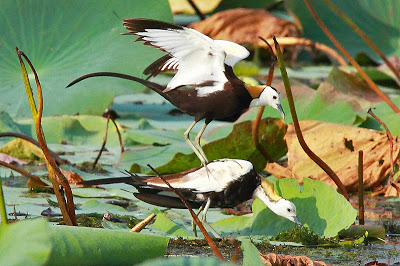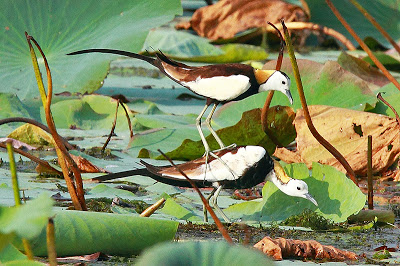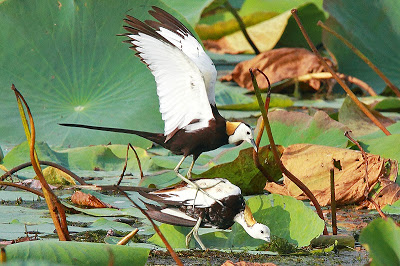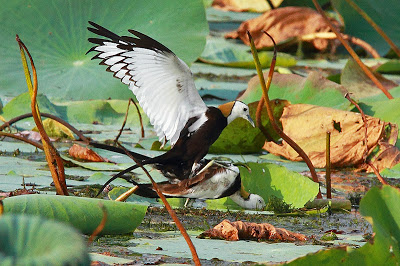Post by George Armistead

Whilst leading a birding tour to Sri Lanka last year, I spotted a flash of bright white in a lily-choked wetland near Ambalantota in the south-east of this verdant island. Closer investigation revealed a stunning male Pheasant-tailed Jacana perched atop a female.

Pheasant-tailed Jacana pair near Ambalantota Sri Lanka by Adam Riley
Our excitement at finding these avian gems soon turned to amazement as the entire tour group became enraptured by the fascinating behavior that we were fortunate enough to observe. The female bird was rhythmically moving her body from left to right, while at the same time the male on her back, tracked her movements. The occasional flashes of white, which first caught our attention, were the male’s underwings, displayed as he raised his wings to regain balance.

Pheasant-tailed Jacana pair near Ambalantota Sri Lanka by Adam Riley
After several minutes, the female finally capitulated, arched her body as the male reached his forwards for the brief “cloacal kiss”, the method most birds use to mate. Whilst we are on the subject of Jacanas and their mating behavior, it is worth noting that this family of birds (as well as phalaropes and painted-snipes) are polyandrous. This is the opposite of polygamous; the females hold and actively defend territories containing several males with whom they have mating rights.

Pheasant-tailed Jacana pair near Ambalantota Sri Lanka by Adam Riley
When the female is ready to lay eggs, she will deposit a clutch of eggs in a nest built by each of her males and that is the end of her role in reproduction. The males will incubate the eggs and raise the chicks to fledgeling status. However, unlike phalaropes and painted-snipes, female jacanas are not more boldly-marked and colorful than the males.

The finale – Pheasant-tailed Jacana pair near Ambalantota Sri Lanka by Adam Riley
